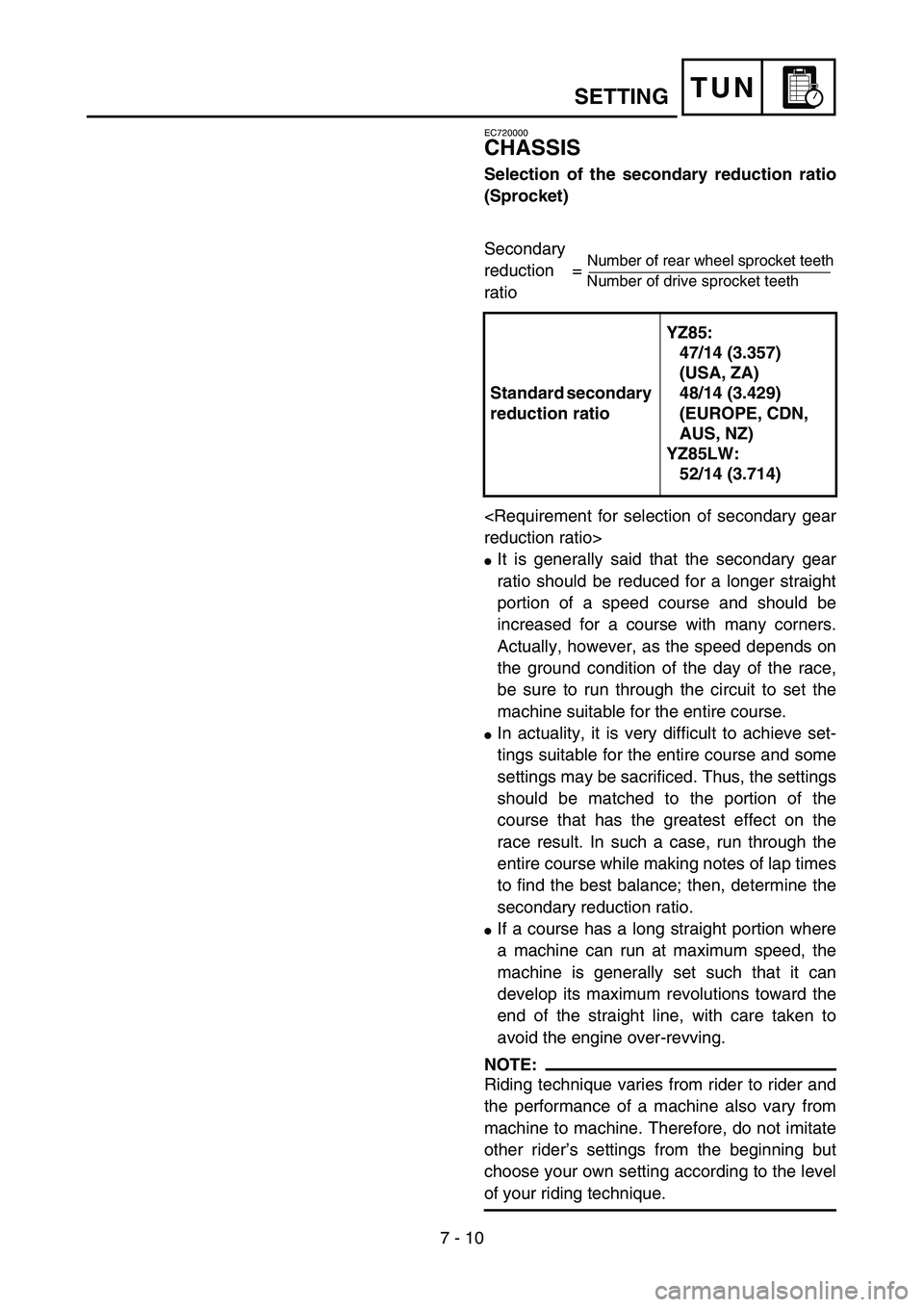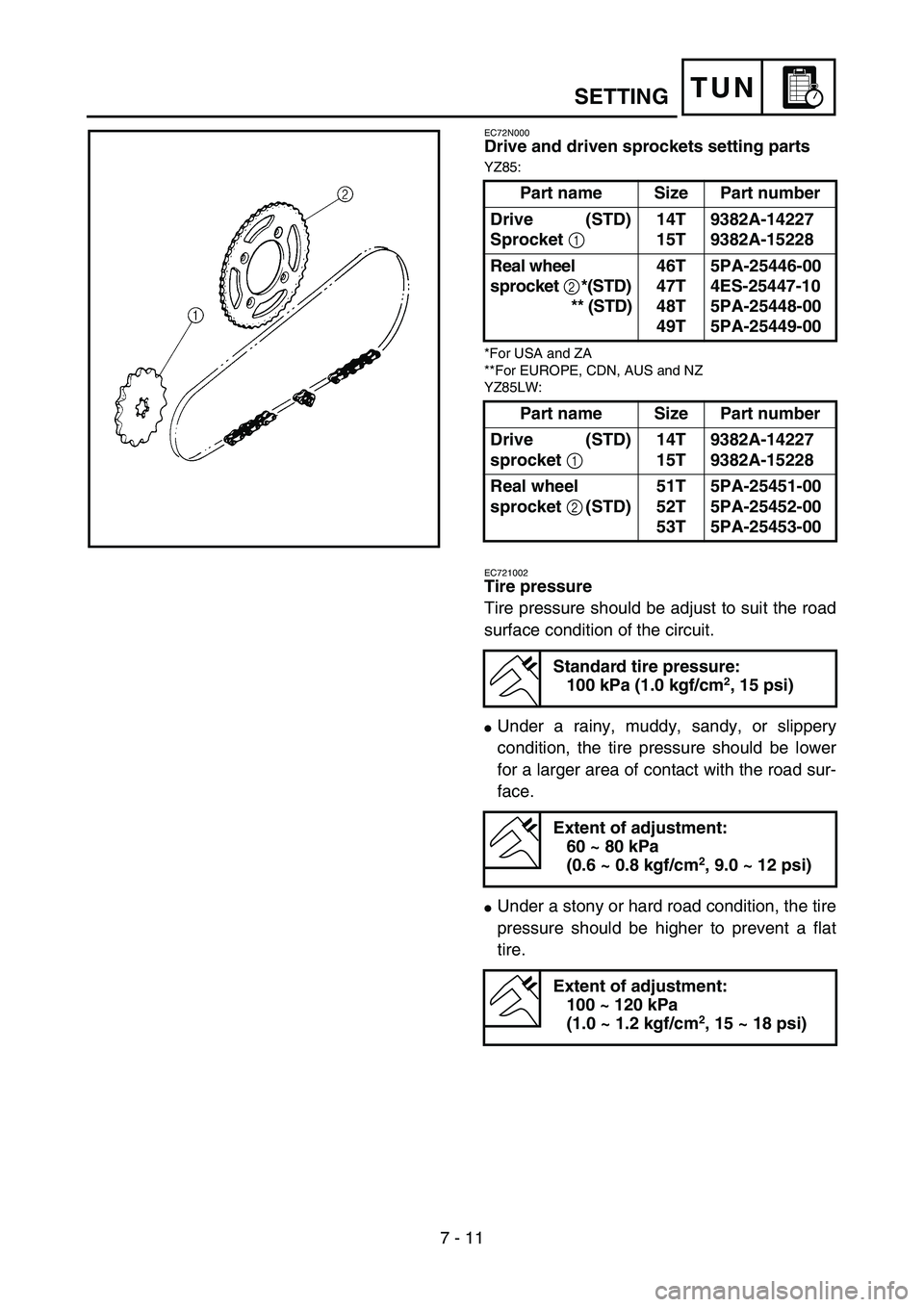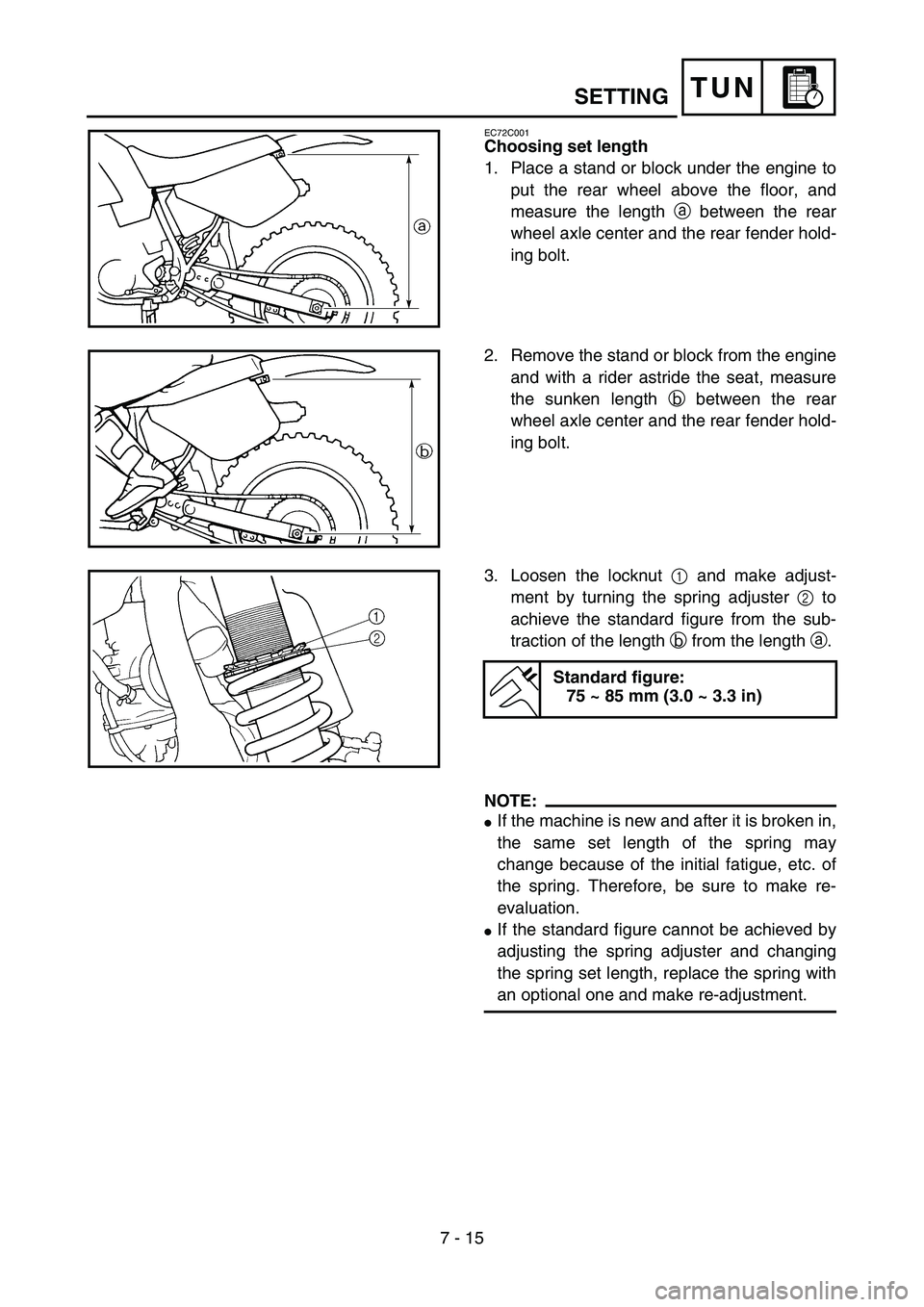Page 484 of 508

7 - 10
TUNSETTING
EC720000
CHASSIS
Selection of the secondary reduction ratio
(Sprocket)
Secondary
reduction =
ratio
reduction ratio>
�It is generally said that the secondary gear
ratio should be reduced for a longer straight
portion of a speed course and should be
increased for a course with many corners.
Actually, however, as the speed depends on
the ground condition of the day of the race,
be sure to run through the circuit to set the
machine suitable for the entire course.
�In actuality, it is very difficult to achieve set-
tings suitable for the entire course and some
settings may be sacrificed. Thus, the settings
should be matched to the portion of the
course that has the greatest effect on the
race result. In such a case, run through the
entire course while making notes of lap times
to find the best balance; then, determine the
secondary reduction ratio.
�If a course has a long straight portion where
a machine can run at maximum speed, the
machine is generally set such that it can
develop its maximum revolutions toward the
end of the straight line, with care taken to
avoid the engine over-revving.
NOTE:
Riding technique varies from rider to rider and
the performance of a machine also vary from
machine to machine. Therefore, do not imitate
other rider’s settings from the beginning but
choose your own setting according to the level
of your riding technique.Standard secondary
reduction ratioYZ85:
47/14 (3.357)
(USA, ZA)
48/14 (3.429)
(EUROPE, CDN,
AUS, NZ)
YZ85LW:
52/14 (3.714)
Number of rear wheel sprocket teeth
Number of drive sprocket teeth
Page 486 of 508

7 - 11
TUNSETTING
EC72N000
Drive and driven sprockets setting parts
YZ85:
*For USA and ZA
**For EUROPE, CDN, AUS and NZ
YZ85LW:
Part name Size Part number
Drive (STD)
Sprocket
114T
15T9382A-14227
9382A-15228
Real wheel
sprocket
2*(STD)
** (STD)46T
47T
48T
49T5PA-25446-00
4ES-25447-10
5PA-25448-00
5PA-25449-00
Part name Size Part number
Drive (STD)
sprocket
1 14T
15T9382A-14227
9382A-15228
Real wheel
sprocket
2(STD)51T
52T
53T5PA-25451-00
5PA-25452-00
5PA-25453-00
5PA70120
EC721002
Tire pressure
Tire pressure should be adjust to suit the road
surface condition of the circuit.
�Under a rainy, muddy, sandy, or slippery
condition, the tire pressure should be lower
for a larger area of contact with the road sur-
face.
�Under a stony or hard road condition, the tire
pressure should be higher to prevent a flat
tire.
Standard tire pressure:
100 kPa (1.0 kgf/cm2, 15 psi)
Extent of adjustment:
60 ~ 80 kPa
(0.6 ~ 0.8 kgf/cm
2, 9.0 ~ 12 psi)
Extent of adjustment:
100 ~ 120 kPa
(1.0 ~ 1.2 kgf/cm
2, 15 ~ 18 psi)
Page 494 of 508

7 - 15
TUNSETTING
EC72C001
Choosing set length
1. Place a stand or block under the engine to
put the rear wheel above the floor, and
measure the length a between the rear
wheel axle center and the rear fender hold-
ing bolt.
5PA70160
2. Remove the stand or block from the engine
and with a rider astride the seat, measure
the sunken length b between the rear
wheel axle center and the rear fender hold-
ing bolt.
5PA70170
3. Loosen the locknut 1 and make adjust-
ment by turning the spring adjuster 2 to
achieve the standard figure from the sub-
traction of the length b from the length a.
Standard figure:
75 ~ 85 mm (3.0 ~ 3.3 in)
5PA70180
NOTE:
�If the machine is new and after it is broken in,
the same set length of the spring may
change because of the initial fatigue, etc. of
the spring. Therefore, be sure to make re-
evaluation.
�If the standard figure cannot be achieved by
adjusting the spring adjuster and changing
the spring set length, replace the spring with
an optional one and make re-adjustment.